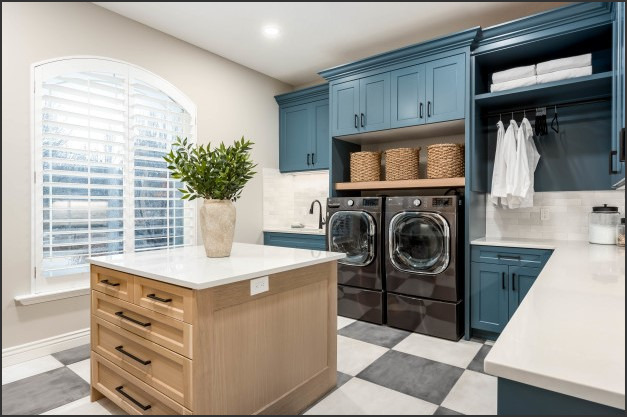
Laundry Door Revival: Ideas for Stylish Laundry Room Doors is a comprehensive guide to transforming your laundry room door into a stylish and functional feature. From traditional to modern, this guide provides a variety of ideas for creating a unique and attractive laundry room door. Whether you’re looking for a simple update or a complete overhaul, this guide has something for everyone. With detailed instructions and helpful tips, you’ll be able to create a laundry room door that is both stylish and practical. So, if you’re looking for a way to add a touch of style to your laundry room, look no further than Laundry Door Revival: Ideas for Stylish Laundry Room Doors.
How to Choose the Perfect Laundry Room Door for Your Home: Tips for Style and Functionality
When it comes to choosing the perfect laundry room door for your home, there are several factors to consider. Style and functionality are two of the most important elements to consider when selecting a door for your laundry room. Here are some tips to help you choose the perfect door for your home.
First, consider the style of the door. The style of the door should complement the overall design of your home. If you have a modern home, you may want to choose a contemporary door with clean lines and minimal detailing. If your home has a more traditional look, you may want to choose a door with more ornate detailing.
Second, consider the functionality of the door. You want to make sure that the door is easy to open and close, and that it is secure. If you have children or pets, you may want to choose a door with a lock. You may also want to consider a door with a window, so you can easily see into the laundry room.
Third, consider the material of the door. You want to choose a material that is durable and easy to maintain. Wood is a popular choice for laundry room doors, as it is both attractive and durable. However, if you live in a humid climate, you may want to choose a material that is more resistant to moisture, such as metal or fiberglass.
Finally, consider the cost of the door. You want to make sure that you are getting the best value for your money. If you are on a budget, you may want to consider a pre-hung door, which is usually less expensive than a custom-made door.
By considering these tips, you can choose the perfect laundry room door for your home. With the right door, you can create a stylish and functional space that will make doing laundry a breeze.
Get Creative with Your Laundry Room Door: Ideas for Unique and Stylish Designs
The laundry room is often an overlooked space in the home, but it can be a great opportunity to get creative with design. A unique and stylish door can be the perfect way to add a touch of personality to the room. Here are some ideas for creating a unique and stylish laundry room door:
1. Paint the Door: Painting the door is a great way to add a pop of color to the room. Choose a bright, bold color to make a statement or a more subtle hue to create a calming atmosphere.
2. Add a Decorative Panel: Adding a decorative panel to the door can be a great way to add texture and interest. Choose a patterned panel or a solid color to create a unique look.
3. Install a Sliding Door: Sliding doors are a great way to save space and add a modern touch to the room. Choose a door with a unique pattern or texture to make it stand out.
4. Install a Barn Door: Barn doors are a great way to add a rustic touch to the room. Choose a door with a unique finish or hardware to make it stand out.
5. Install a Pocket Door: Pocket doors are a great way to save space and add a modern touch to the room. Choose a door with a unique pattern or texture to make it stand out.
6. Install a French Door: French doors are a great way to add a touch of elegance to the room. Choose a door with a unique finish or hardware to make it stand out.
No matter what design you choose, adding a unique and stylish door to your laundry room can be a great way to add personality and style to the space. With these ideas, you can create a door that is both functional and stylish.Laundry Door Revival: Ideas for Stylish Laundry Room Doors is a great resource for anyone looking to add a unique and stylish touch to their laundry room. From sliding barn doors to French doors, there are plenty of options to choose from that will help you create a beautiful and functional space. With the right door, you can transform your laundry room into a stylish and inviting space that you’ll be proud to show off.
